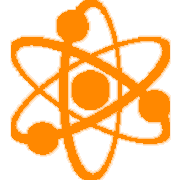High School Science
 (PS) Physical Science
(PS) Physical Science
[HS-PS1]Matter
and Its
Interactions
[HS-PS2]
Motion and Stability:
Forces and Interactions
[HS-PS3]
Energy
[HS-PS4]
Waves and
Their Applications
in Technologies for
Information Transfer.
| [HS-PS3] |
SCI-HS.PS3.01
SCI-HS.PS3.01 Create a mathematical model to calculate the change in the energy of one component in a system when the change in energy of the other component(s) and energy flows in and out of the system are known.
Clarification Statement: Student Learning Targets:Knowledge Targets
Reasoning Targets
Skills (Performance) Targets
Product Targets
Proficiency ScaleThe Student can ...1 Beginning... with help, demonstrate a partial understanding of some of the simpler details and processes (Score 2.0 content) and some of the more complex ideas and processes (Score 3.0 content).
2 Developing... demonstrate no major errors or omissions regarding the simpler details and processes but exhibits major errors or omissions regarding the more complex ideas and processes (Score 3.0 content).
3 Proficient“The Standard.”... demonstrate no major errors or omissions regarding any of the information and processes that were end of instruction expectations.
4 Advanced... demonstrate in-depth inferences and applications regarding more complex material that go beyond end of instruction expectations.
ResourcesVocabulary
Websites
| |
SCI-HS.PS3.02
SCI-HS.PS3.02 Develop and use models to illustrate that energy is associated with motion and relative position of particles (objects).
Clarification Statement: Student Learning Targets:Knowledge Targets
Reasoning Targets
Skills (Performance) Targets
Product Targets
Student learning targets are embedded in the proficiency scales. Proficiency Scale for Quantum Theory (Chemistry)
ResourcesWebsites Vocabulary | ||||||||||||||||||||||||||||||||||||
SCI-HS.PS3.03
SCI-HS.PS3.03 Design, build, and refine a device that works within given constraints to convert one form of energy into another form of energy.
Clarification Statement: Student Learning Targets:Knowledge Targets
Reasoning Targets
Skills (Performance) Targets
Product Targets
Proficiency ScaleThe Student can ...1 Beginning... with help, demonstrate a partial understanding of some of the simpler details and processes (Score 2.0 content) and some of the more complex ideas and processes (Score 3.0 content).
2 Developing... demonstrate no major errors or omissions regarding the simpler details and processes but exhibits major errors or omissions regarding the more complex ideas and processes (Score 3.0 content).
3 Proficient“The Standard.”... demonstrate no major errors or omissions regarding any of the information and processes that were end of instruction expectations.
4 Advanced... demonstrate in-depth inferences and applications regarding more complex material that go beyond end of instruction expectations.
ResourcesVocabulary
Websites
| |
SCI-HS.PS3.04
SCI-HS.PS3.04 Plan and conduct an investigation to provide evidence that the transfer of thermal energy when two components of different temperature are combined within a closed system results in a more uniform energy distribution among the components in the system (second law of thermodynamics).
Clarification Statement: Student Learning Targets:Knowledge Targets
Reasoning Targets
Skills (Performance) Targets
Product Targets
Student "I can" statements are embedded within the proficiency scale. Proficiency Scale (Physical Science)
ResourcesWebsites Vocabulary | ||||||||||||||||||||||||||||||||||||||||
SCI-HS.PS3.05
SCI-HS.PS3.05 Develop and use a model of two objects interacting through electric or magnetic fields to illustrate the forces between objects and the changes in energy of the objects due to the interaction.
Clarification Statement: Student Learning Targets:Knowledge Targets
Reasoning Targets
Skills (Performance) Targets
Product Targets
Proficiency ScaleThe Student can ...1 Beginning... with help, demonstrate a partial understanding of some of the simpler details and processes (Score 2.0 content) and some of the more complex ideas and processes (Score 3.0 content).
2 Developing... demonstrate no major errors or omissions regarding the simpler details and processes but exhibits major errors or omissions regarding the more complex ideas and processes (Score 3.0 content).
3 Proficient“The Standard.”... demonstrate no major errors or omissions regarding any of the information and processes that were end of instruction expectations.
4 Advanced... demonstrate in-depth inferences and applications regarding more complex material that go beyond end of instruction expectations.
ResourcesVocabulary
Websites
| |


 DCI Physical Science PS3
DCI Physical Science PS3